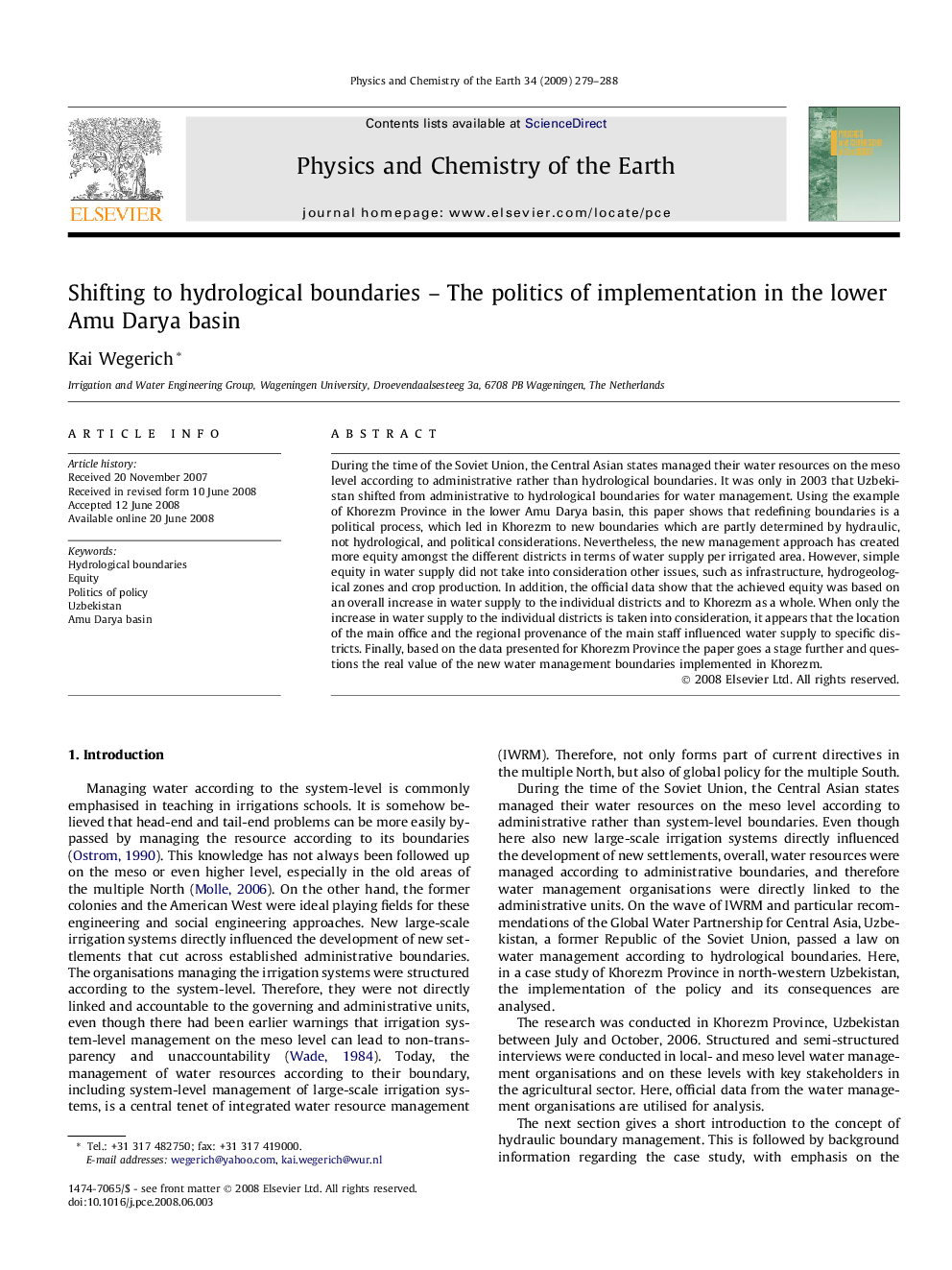| Article ID | Journal | Published Year | Pages | File Type |
|---|---|---|---|---|
| 4721567 | Physics and Chemistry of the Earth, Parts A/B/C | 2009 | 10 Pages |
During the time of the Soviet Union, the Central Asian states managed their water resources on the meso level according to administrative rather than hydrological boundaries. It was only in 2003 that Uzbekistan shifted from administrative to hydrological boundaries for water management. Using the example of Khorezm Province in the lower Amu Darya basin, this paper shows that redefining boundaries is a political process, which led in Khorezm to new boundaries which are partly determined by hydraulic, not hydrological, and political considerations. Nevertheless, the new management approach has created more equity amongst the different districts in terms of water supply per irrigated area. However, simple equity in water supply did not take into consideration other issues, such as infrastructure, hydrogeological zones and crop production. In addition, the official data show that the achieved equity was based on an overall increase in water supply to the individual districts and to Khorezm as a whole. When only the increase in water supply to the individual districts is taken into consideration, it appears that the location of the main office and the regional provenance of the main staff influenced water supply to specific districts. Finally, based on the data presented for Khorezm Province the paper goes a stage further and questions the real value of the new water management boundaries implemented in Khorezm.
